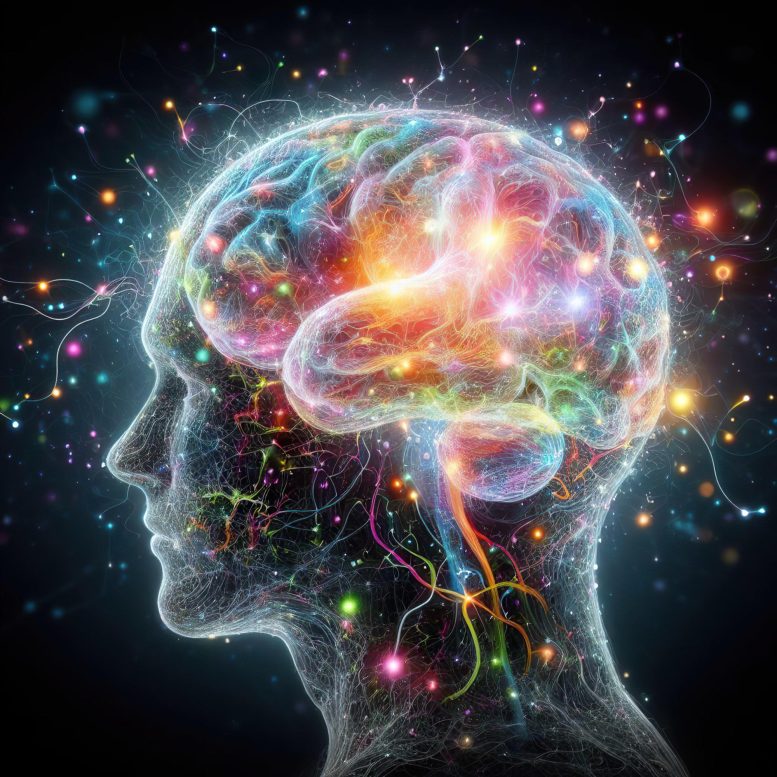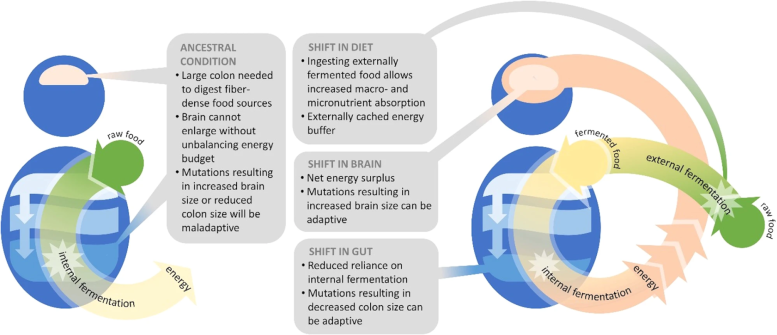
A new study suggests that the evolution of the human brain’s increased size may be attributed to the consumption of fermented foods, offering an alternative to the theory that cooking was the key driver. This dietary shift likely provided the necessary nutrition to support a larger brain, with implications for future research in human health and evolution.
The study hypothesizes that ‘pre-digested’ foods contributed to the development of larger brains.
The large, capable human brain is a marvel of evolution, but how it evolved from a smaller primate brain into the creative, complex organ of today is a mystery. Scientists can pinpoint when our evolutionary ancestors evolved larger brains, which roughly tripled in size as human ancestors evolved from the bipedal primates known as Australopithecines.
But why it happened when it did – what spurred that change – has remained elusive. While some have theorized that the use of fire, and the subsequent invention of cooking, gave our ancestors enough nourishment for our larger-brained ancestors to become dominant, a new theory points to a different spark: fermentation.
The Role of Diet in Brain Evolution
The key to understanding how our brains grew is most likely rooted in what – and how – we eat, said Erin Hecht, one of the authors of the study which was recently published in Nature Communications Biology.
“Brain tissue is metabolically expensive,” said the Human Evolutionary Biology assistant professor. “It requires a lot of calories to keep it running, and in most animals, having enough energy just to survive is a constant problem.” For larger-brained Australopiths to survive, therefore, something must have changed in their diet. Theories put forward have included changes in what these human ancestors consumed or, most popularly, that the discovery of cooking allowed them to garner more usable calories from whatever they ate.
But the problem with this theory is that the earliest evidence places the use of fire at approximately 1.5 million years ago – significantly later than the development of the hominid brain. “Our ancestors’ cranial capacity began increasing 2.5 million years ago, which conservatively gives us about a 1-million-year gap in the timeline between brain size increasing and the possible emergence of cooking technology,” explained Katherine L. Bryant, one of the paper’s co-authors and currently a researcher at the Institute for Language, Communication, and the Brain at Aix-Marseille Université in France. “Some other dietary change must have been releasing metabolic constraints on brain size, and fermentation seems like it could fit the bill.”
Added Hecht: “Whatever changed in their diets had to have happened before brains started getting bigger.”
Fermentation: A New Perspective on Brain Growth
She continued, noting that during the last few years, researchers have postulated other options, such as the consumption of rotting meat. In this new paper, Hecht and her team offer a different hypothesis: that cached (or saved) food fermented, and that this “pre-digested” food provided a more accessible form of nourishment, fueling that bigger brain and allowing our larger-brained ancestors to survive and thrive through natural selection.
The shift was probably a happy accident. “This was not necessarily an intentional endeavor,” Hecht posited. “It may have been an accidental side effect of caching food. And maybe, over time, traditions or superstitions could have led to practices that promoted fermentation or made fermentation more stable or more reliable.”
This hypothesis is supported by the fact that the human large intestine is proportionally smaller than that of other primates, suggesting that we adapted to food that was already broken down by the chemical process of fermentation. In addition, fermented foods are found in all cultures and across food groups, from Europe’s wine and cheese to Asia’s soy sauce and natto, or soybeans.
Hecht suggested that an additional study of brain responses to fermented and non-fermented foods might be useful, as might one of olfactory and taste receptors, perhaps using ancient DNA. For the evolutionary biologist, these are all fertile areas for other researchers to pick up on. (Hecht’s focus is more on “how brain circuits have evolved to support complex behaviors” with research on both living humans and dogs.)
As research progresses, Bryant sees possibilities for a wide range of benefits. “This hypothesis also gives us as scientists even more reasons to explore the role of fermented foods on human health and the maintenance of a healthy gut microbiome,” she said. “There have been a number of studies in recent years linking gut microbiome to not only physical but mental health.”
Reference: “Fermentation technology as a driver of human brain expansion” by Katherine L. Bryant, Christi Hansen and Erin E. Hecht, 23 November 2023, Communications Biology.
DOI: 10.1038/s42003-023-05517-3










I doubt the “Harvard scientists” discovered anything. Other than the uselessness of DEI. It must be great to be tenured and sit around like college freshman solving the mysteries of life with outlandish theorizing.
No, humans can not get EPA and DHEA fatty acids from fermented or any vegetables, only animal fats. We hunted our way to bigger brains and they know this. This is deliberate.
So is that how dolphins & orca ended up with bigger brains, eating rotten seaweed? I don’t think so. And dolphins’ brains are comparable in size to humans including that they at least possess the so-called “basic intelligence” of a human.
In case nobody really noticed, a catalyst that sets humans apart from any other animals is how the fingers of our hands work: The dexterity of our hands is unparalleled in the animal kingdom and rivals that of any other primates where we can touch the tip of the thumb to the tip of each forefinger; no other primate can do that.
Now as far as dolphins go, they could probably compete against humans based on their brain power if they also had our hands, but they don’t. They have fins…
Ive been connecting and pushing this theory for years..
Glad to see its finally gettong ots hay day..
Im loving watch all these animal abusers freak out that meat isnt apart of the equation!
I believe you are all correct…also I’m thinking maybe certain fruits increased meat absorption
Don’t we have other things more important to think about. I see now why we are relying on China and others to work on cures for cancer and other diseases. Wake up America!!
Obviously, mutants with larger brains did survive and reproduce by getting or finding sufficient food to do so. This is too obvious to be of interest to me. It is, or should be, obvious that recent mutants of the human lineage would have been extra gifted with a increased cognitive and physioanatomical capacity to make and use tools to provide food with and to make fire for cooking it with. It is also obvious that this would have provided a selective advantage, not least a through sexual selection, primarily in such mutants’ family group of origin. Check out aeimcinternetional.org in respect of all this and more about our evolution and current behaviors.